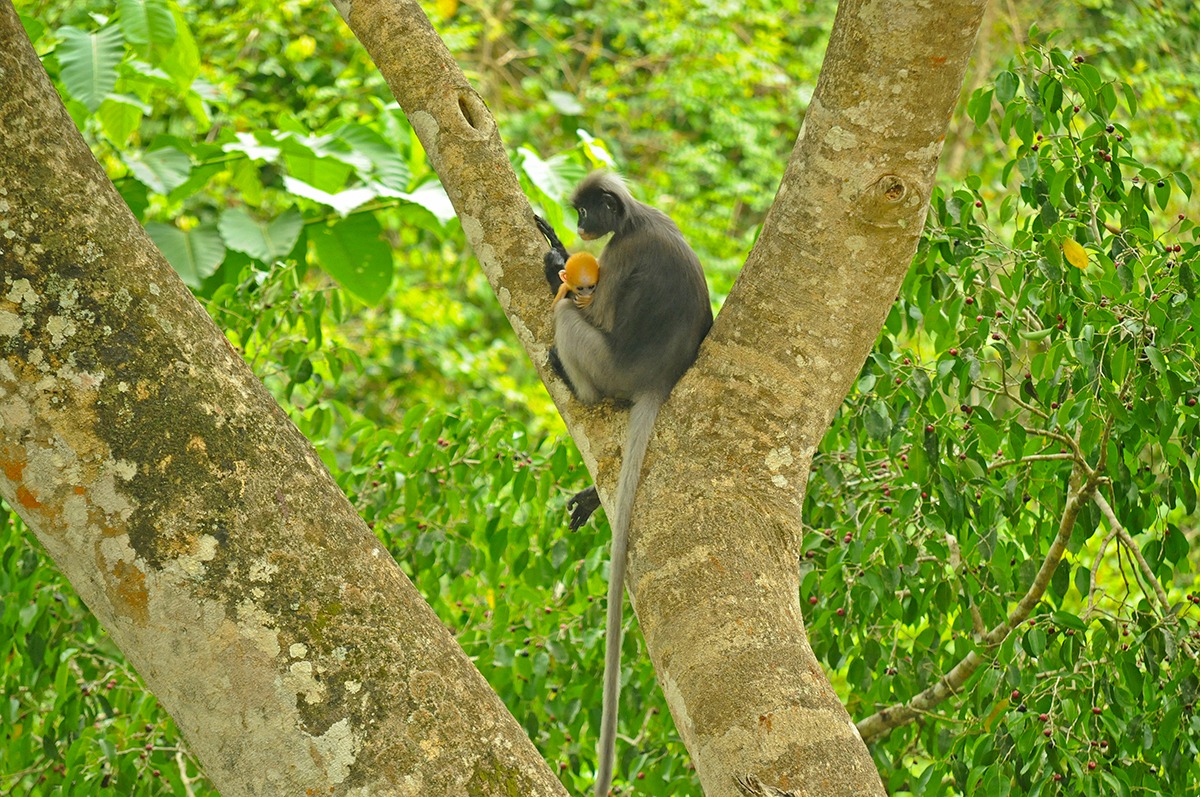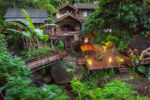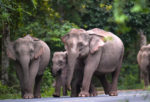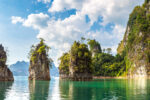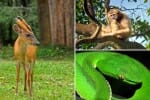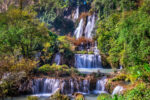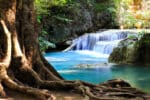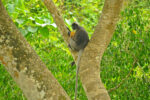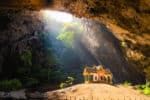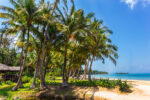If you enjoy watching animals in their natural habitat and would like to get off the beaten path in Thailand, you will love Kaeng Krachan National Park. At 2,914 square kilometres, it is the largest national park in Thailand.
Unlike the more popular national parks in Thailand, like Khao Yai, Erawan, Khao Sok or even Khao Sam Roy Yot, there aren’t many organised tours to Kaeng Krachan National Park. I haven’t come across any. So you’ll need your own set of wheels to visit the park.
There are two camping sites for wildlife watching in Kaeng Krachan: Ban Krang a few kilometres from the park entrance and Phanoen Thung at the top of the mountain. Both have some basic facilities and a restaurant.
We spent four nights in Kaeng Krachan, two nights at each site. And we saw more of Thailand’s animals in these four days than in any other one place in Thailand. Read about our experience below if you are planning your own Kaeng Krachan National Park adventure.
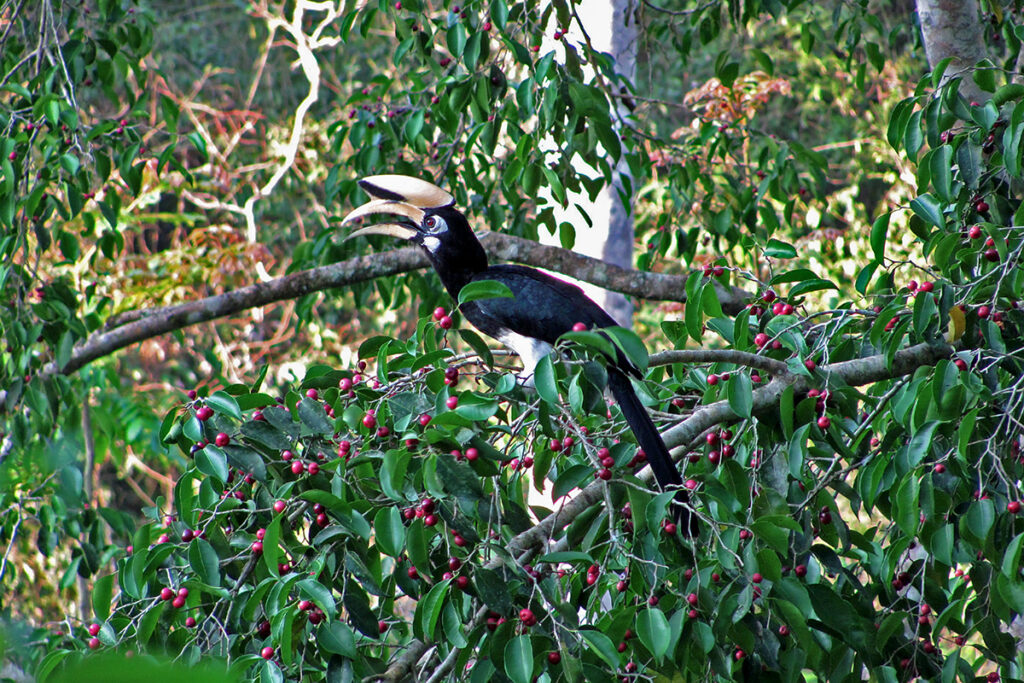
Ban Krang Campsite
The first couple of nights we spent at Ban Krang. There was an enormous fig tree growing up from the ravine below with its crown towering over the campsite and the road to the top of the mountain. That tree was an all-around wildlife watching destination in itself. Our adventures of wildlife watching in Khaeng Krachan started as soon as we arrived. We spotted a family of Dusky langurs and a Black giant squirrel on that tree.
The sheer number of birds around the tree was spectacular. In the first few minutes, we spotted: a Great hornbill, Stripe-throated bulbul, Oriental pied hornbill, Asian fairy bluebird, Red-throated barbet, Lineated barbet, Black-capped kingfisher and Forest wagtail.
READ MORE: 50 Outstanding Safari Holidays Destinations Outside of Africa
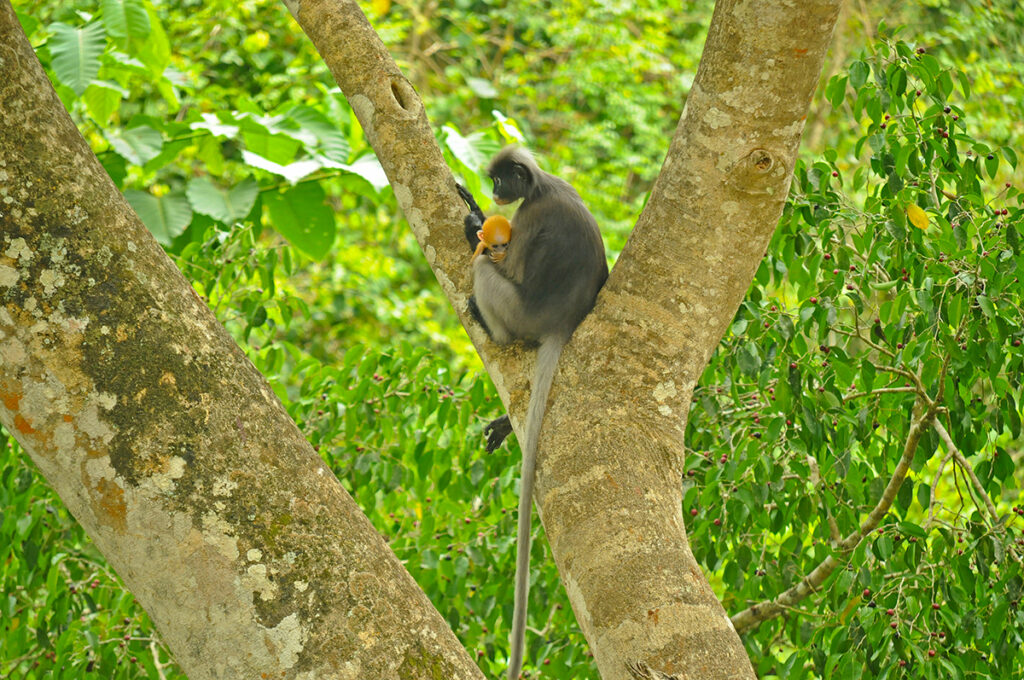
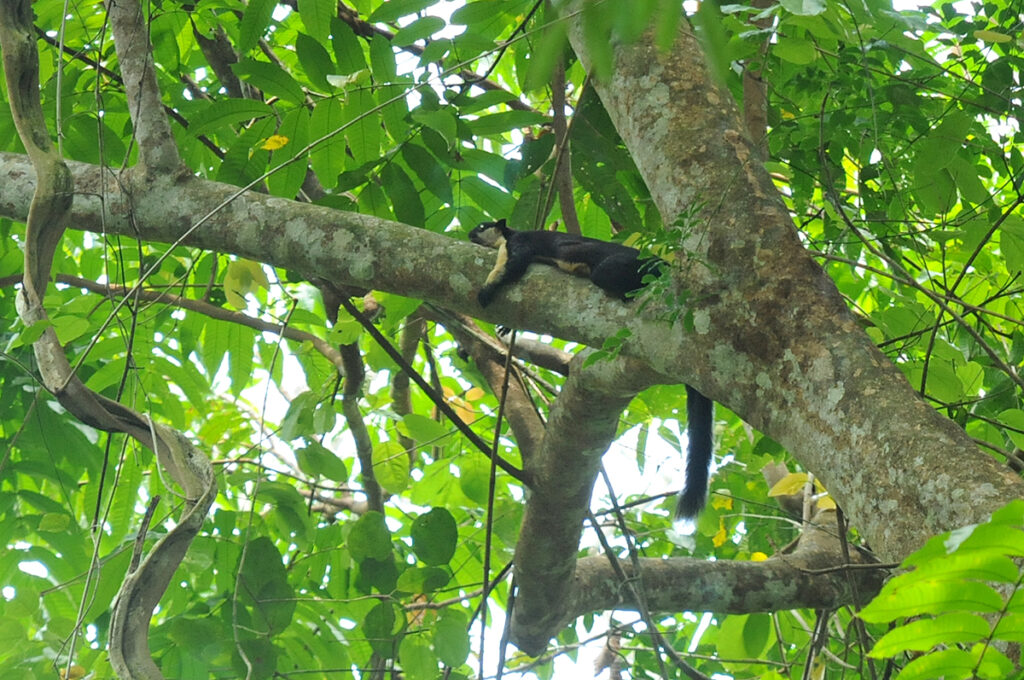
Once we pitched our tents we went for an exploratory walk along the stream and spooked a reasonably-sized animal from its mud bath. Judging by the prints on the bank it was a wild pig, but none of us actually saw the animal.
We didn’t see much else on the trail, apart from a Forest crested lizard and a Four-lined tree frog, so we went for a drive on the main road towards the park entrance.
We stopped when we saw a Blue-bearded bee-eater disappearing into the thicket, and followed it for a closer look. What we found in the forest was the remnants of a carcass surrounded by WWF wireless camera traps. It must’ve been a leopard’s kill that the researchers in the park were monitoring. Leopards are regularly spotted in Kaeng Krachan.
Nighttime wildlife at Ban Krang
In the evening after we had dinner at the restaurant the staff told us that civets and porcupines often come to feed on leftover rice that the cook leaves for them behind the restaurant. And true to form, the grass patch behind the kitchen saw a fair bit of activity at night.
At first, a Malayan porcupine appeared from the gully below. It was then followed by another porcupine and the two animals fed together quite contently for a while. Until a Common palm civet emerged and intimidated the porcupines into retreating back to the gully.
The porcupines were quite common around the campsite, just outside of the illuminated areas.
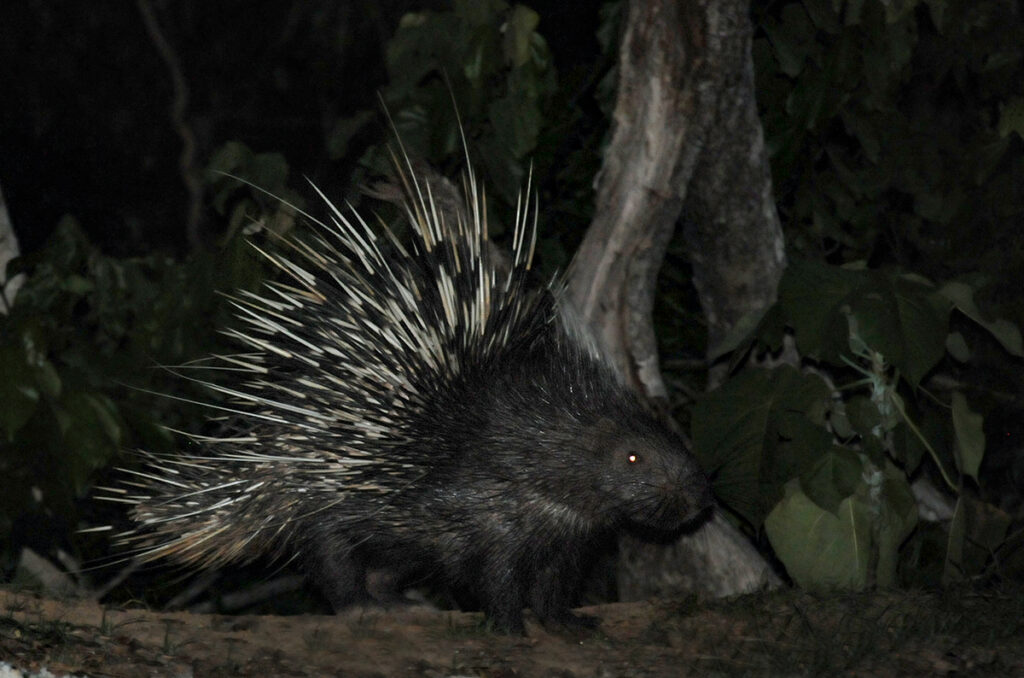
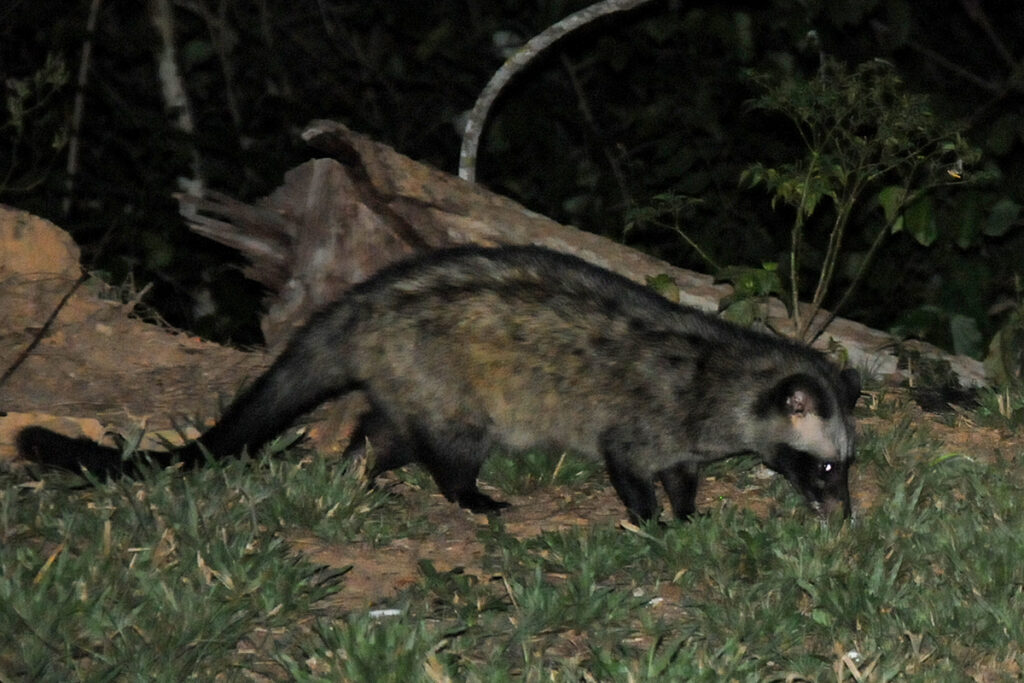
Day 2 at Ban Krang
We woke up to an absolutely incredible dawn chorus. One of the most interesting birds on the fig tree this morning was an Asian barred owlet. Another two additions to yesterday’s list were Green-eared barbet and Puff-throated bulbul. There were also a couple of Black giant squirrels and a Grey-bellied squirrel feeding on the fruit in the canopy.
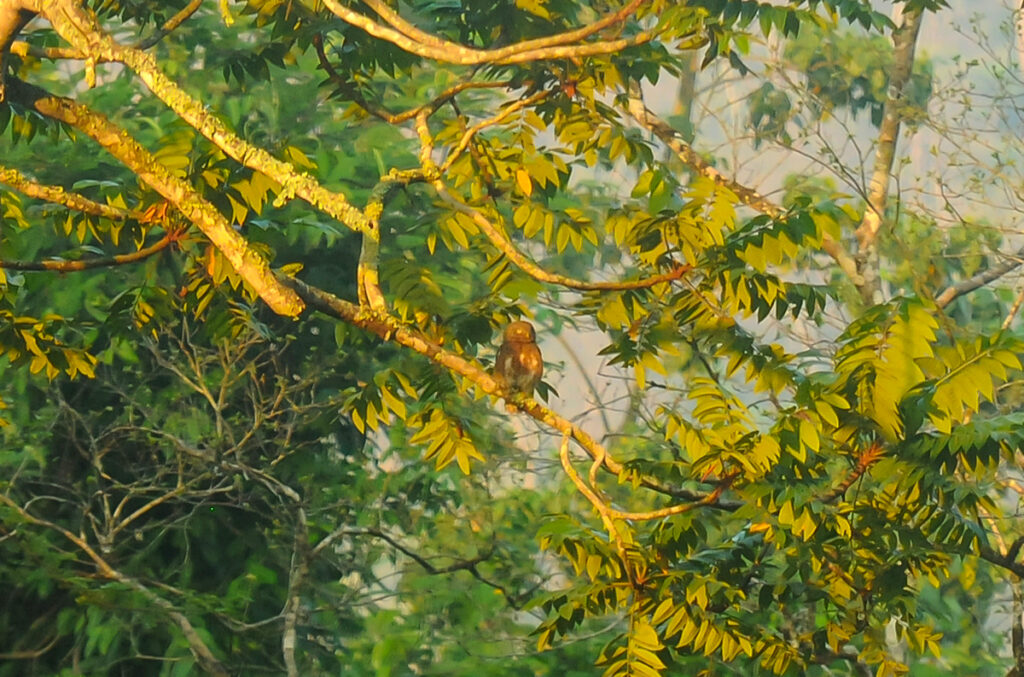
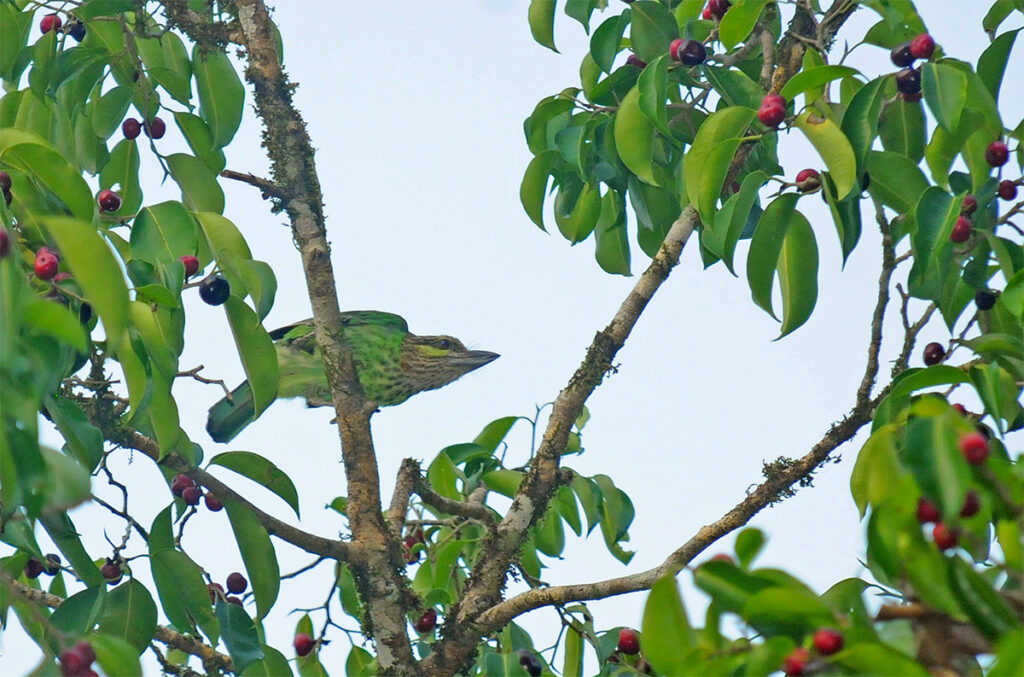
While we were watching the birds a fellow birdwatcher told us that there was a Brown hornbill nest in a tree about two kilometres up the road leading to the top of the mountain. Our hire car was just a little sedan and the road all the way to the top was very steep in parts, incredibly windy and interspersed with creek crossings. The common consensus was that it was impossible to reach the mountaintop in a 2WD.
To compromise we drove for about 1km until we reached the first creek crossing, parked the car and walked the rest of the way up. The birds were very abundant on the trail: Common goldenback woodpecker, Orange-breasted trogon, Chestnut-breasted malcoha, Green-billed malcoha and Indian roller.
We found the Brown hornbill nest without too much trouble and spent some time watching the parents take turns bringing food to their young.
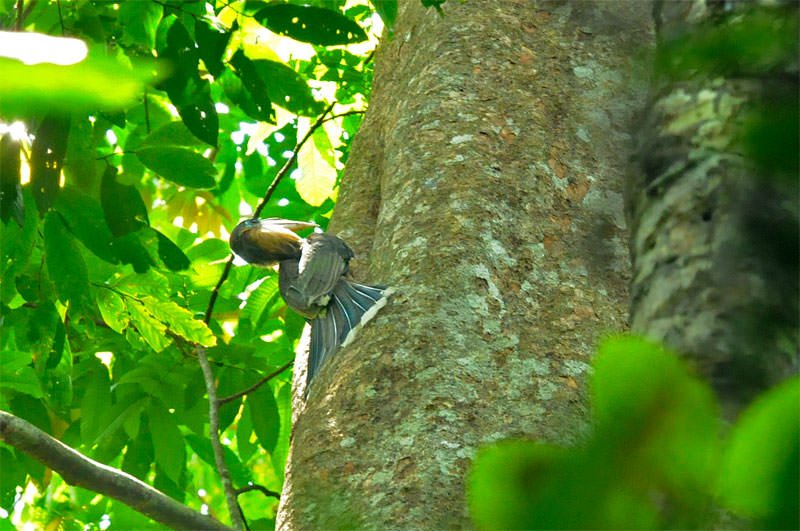
While we were watching the hornbills I caught a whiff of the distinct musky smell of Binturong. And the hunt was on. We followed our noses through the forest along the road obsessively scanning the high branches in hopes of spotting the animal itself. The foliage was very lush and thick and visibility was incredibly poor. We gave up after a few hundred meters, but our spirits were lifted by a sighting of a Crab-eating mongoose on the walk back to the car.
Dusky langurs were everywhere. Some of the females were carrying their bright orange young. At some point, they became very excited and filled the air with their alarm calls. As hard as we stared into the forest we couldn’t see or hear the source of the potential danger.
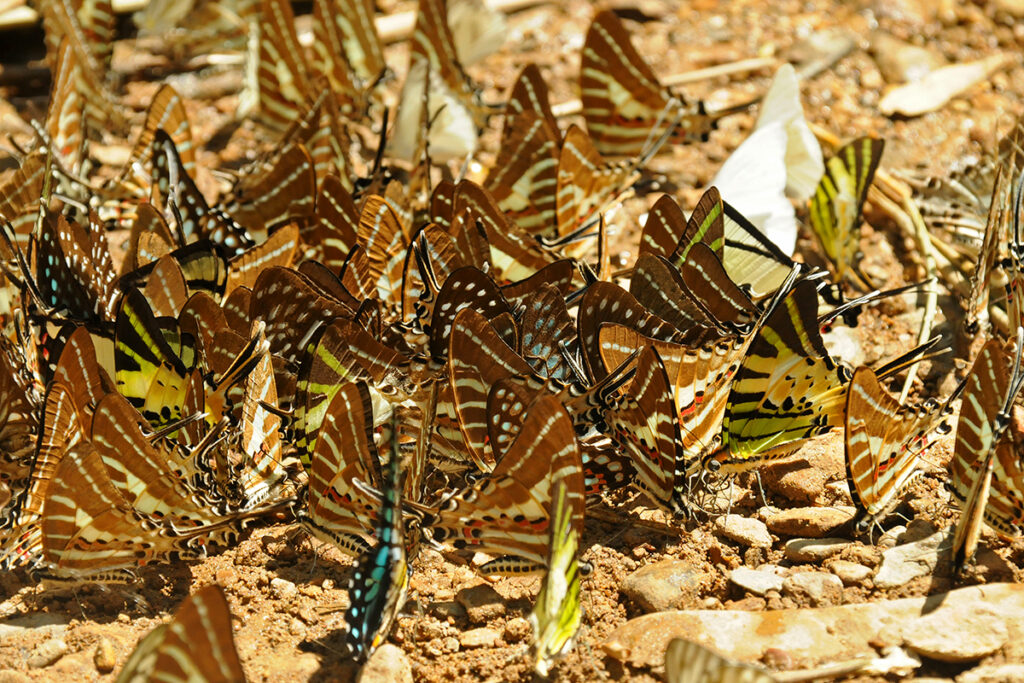
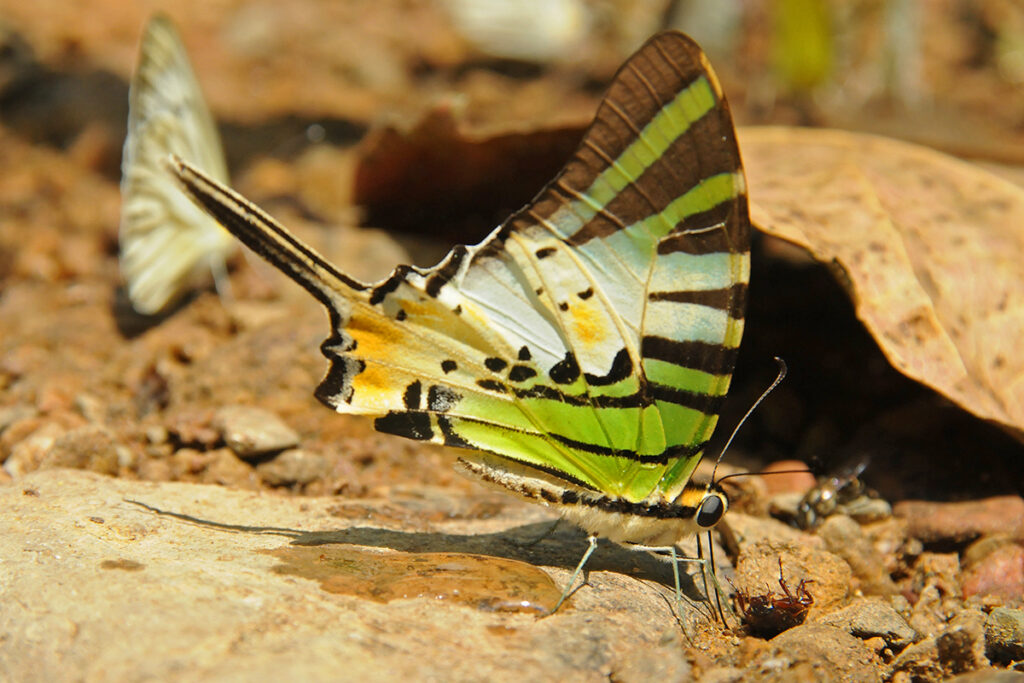
Further up along the road, near Ban Krang, we found a few prints on the road. One set belonged to a civet, while the other was from a smallish feline, though not as small as a leopard cat.
Kaeng Krachan is also known for its diversity of butterflies. It’s one of the best places in the county to see a good variety of Thailand’s butterflies. As we drove up and down the road we saw hundreds of butterflies congregating around small puddles on the road.
Back at the camp, we were greeted by a large Rock monitor that was snoozing on a tree standing between our two tents. Slightly higher up the tree a Black giant squirrel was having a snooze as well.
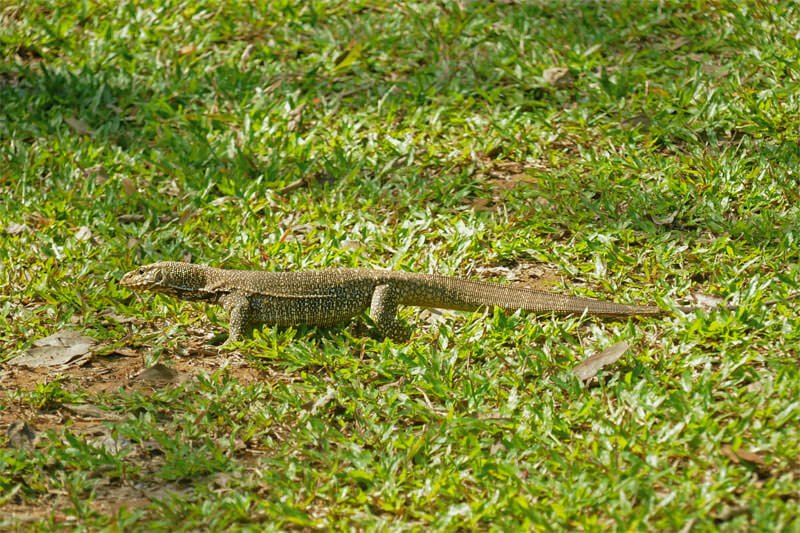
At night we saw a single Malayan porcupine behind the restaurant. No civets turned up for a free meal.
Upgrading to a 4WD
Encouraged by our explorations of the mountain yesterday, we decided to go back to town to swap our rental car for a 4WD. On the way to the park entrance, we came across a watering hole. The park wasn’t busy and we haven’t seen a single car on the road, so we pulled over by the curb and decided to wait and see if some critters would come out of the forest for a drink.
The watering hole turned out to be an absolute gem and over the next three days, we saw quite a few species of mammals there. This morning it was a Barking deer or Common muntjac that came out wearily for a quick drink.
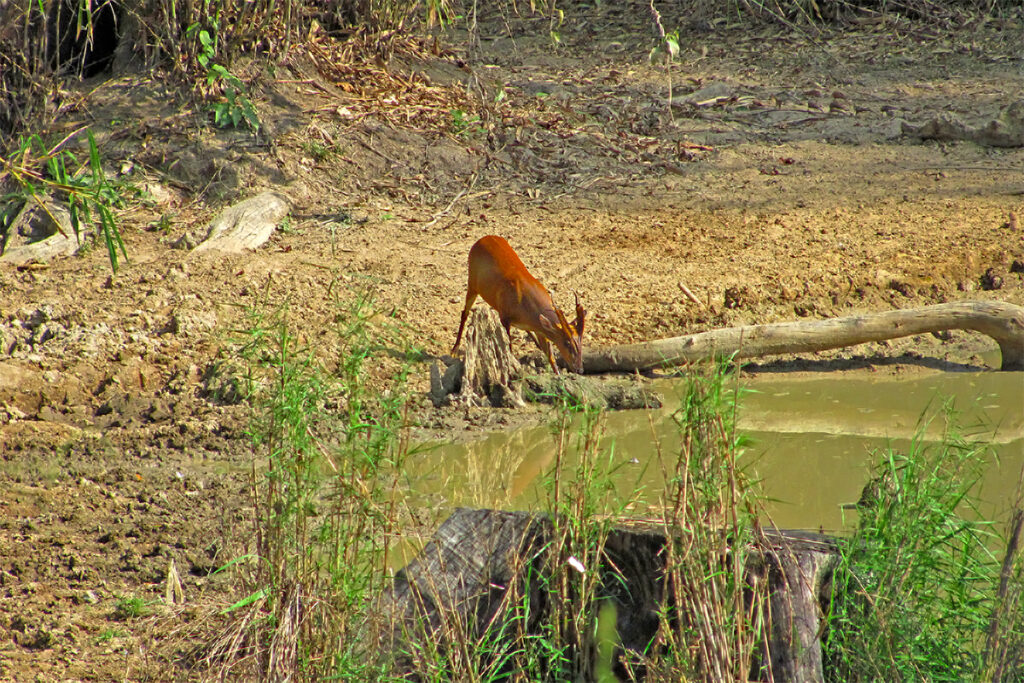
Panoentung campsite
On the way back from Hua Hin in our fancy 4WD, we came across a troop of Northern pig-tailed macaques by the waterhole. Once the macaques departed, we drove straight to the Panoentung campsite at the top of the mountain.
The road was very steep indeed and we could see that there would’ve been no way to make this trip in a 2WD. By the time we arrived at the camp and pitched our tents it was already nearing sunset. The restaurant at Panoentung turned out to be a good spot for watching Streaked spiderhunters. I also spotted some Flavescent bulbuls and a Black-throated laughingthrush while waiting for the others to get organized.
One of the things Kaeng Krachan National Park is famous for is the thick Sea of Mist that envelopes the mountain tops early in the morning. I thought a look at it at sunset would also be a good idea and we weren’t disappointed. The mountain ridges were rising in jagged silhouettes against the orange-hued sky, stretching all the way to the horizon.
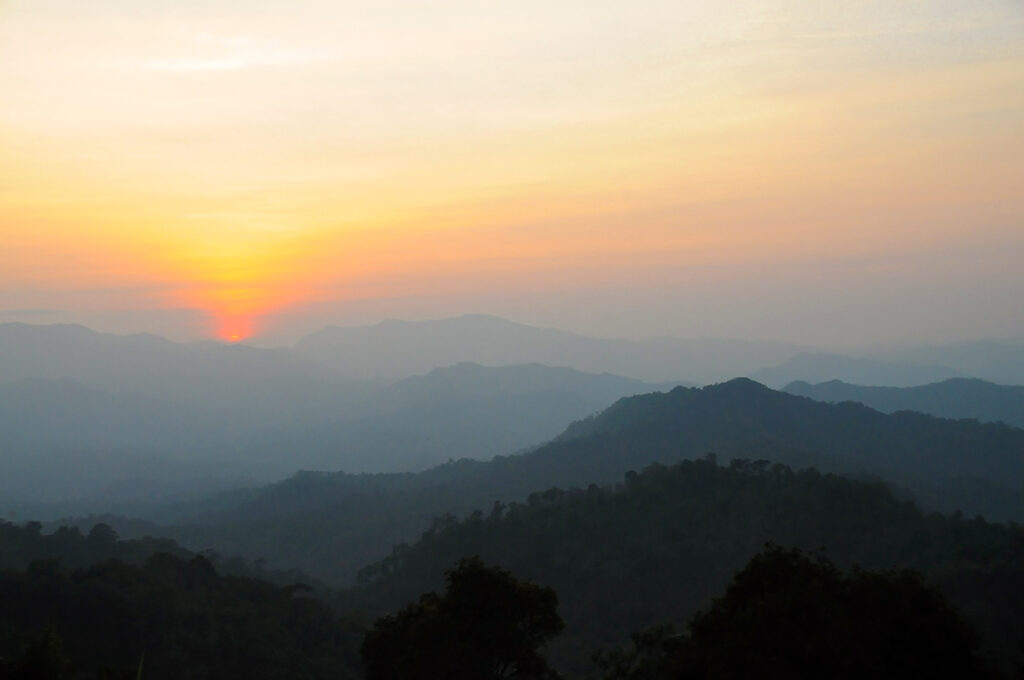
The restaurant at Panoentung also leaves its leftover rice for the animals at night, but the only visitor we had on the first night was a single Malayan porcupine.
Day 2 at Panoentung campsite
We started the day with a visit to the viewpoint to see the famous Sea of Mist. As the first light lifted the darkness, the mist appeared like a thick fluffy blanket hanging over the rugged mountain tops as far as the eye could see.
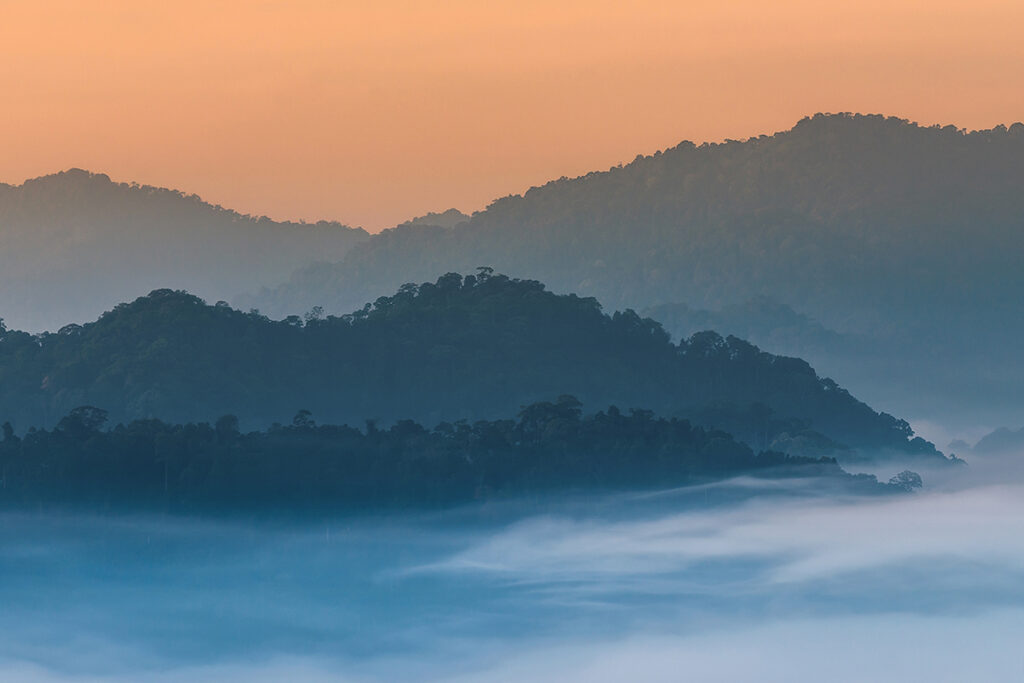
Back at the camp, we spotted some cool birds including a Black baza, a Mountain imperial pigeon and an Emerald dove.
After breakfast, we started to slowly make our way down the mountain watching out for wildlife along the way. There were lots of Dusky langurs in the trees, a pair of White-handed gibbons a white and a black morphs, and plenty of Black giant squirrels.
During the heat of the day, we took a drive to the watering hole again, and there was quite a bit of action there. At first, a troop of Stump-tailed macaques turned up. Some of the females were carrying tiny little young, pure white in colour.
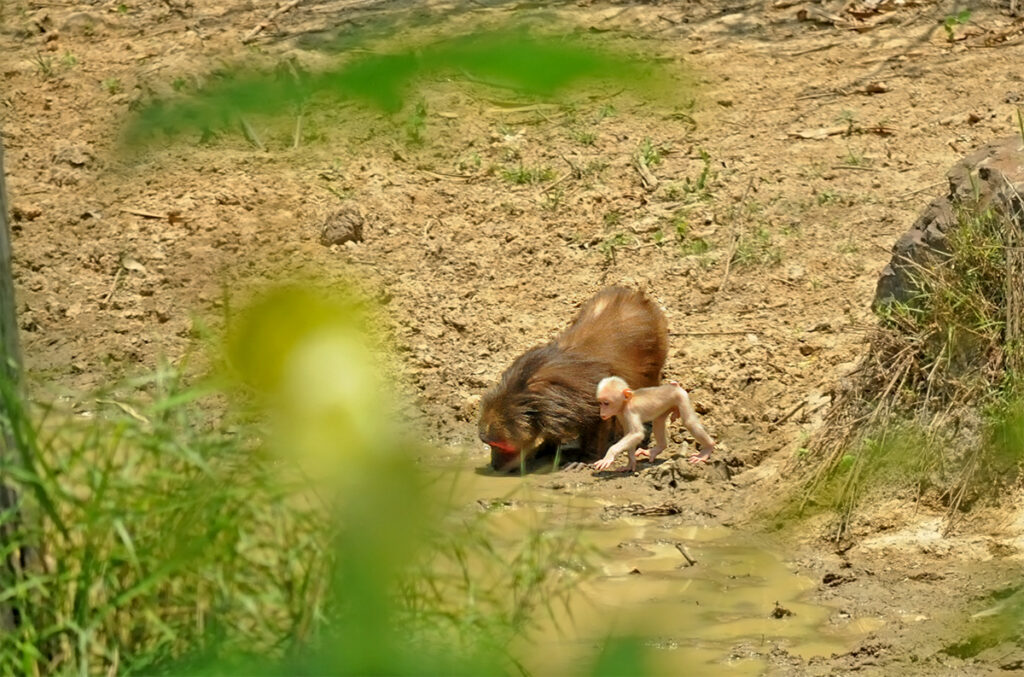
Once the monkeys departed a Sambar fawn emerged from the forest followed by its mother. The young had a good drink and even a bit of a bath while his mother stood guard.
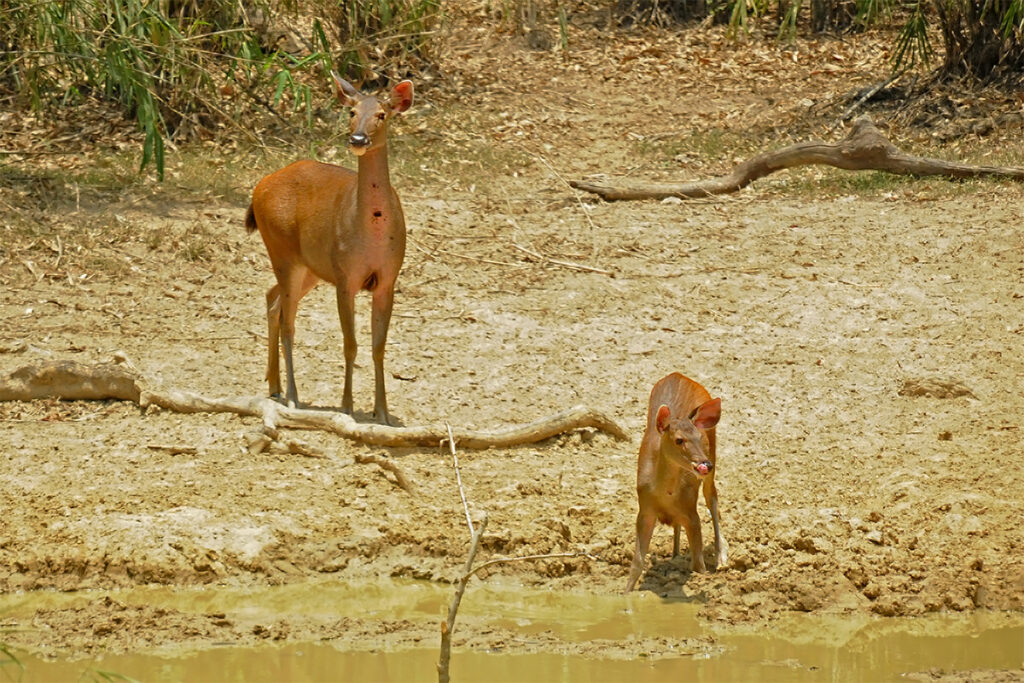
We took a drive to the visitor centre at the park entrance and saw a stunning Blue crested lizard sunning itself on a log. The visitor centre has some information posters about the wildlife found in the park as well as some handy maps of the area.
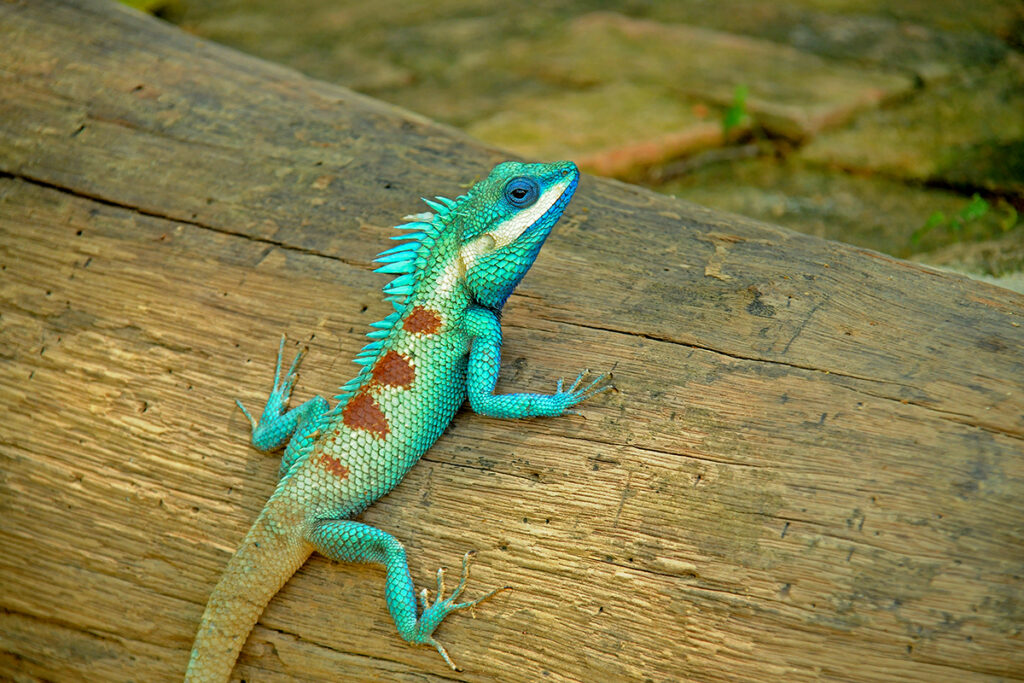
As we drove past the watering hole on the way back to camp we saw another couple of Barking deer. We stayed and waited to see if something else would come out, but it was quiet for the later part of the afternoon.
Nighttime wildlife at Panoentung Campsite
Back at camp after dinner, we settled in to watch the rice battleground and were rewarded by the views of a Masked palm civet in addition to the Common palm civet and Malayan porcupines.
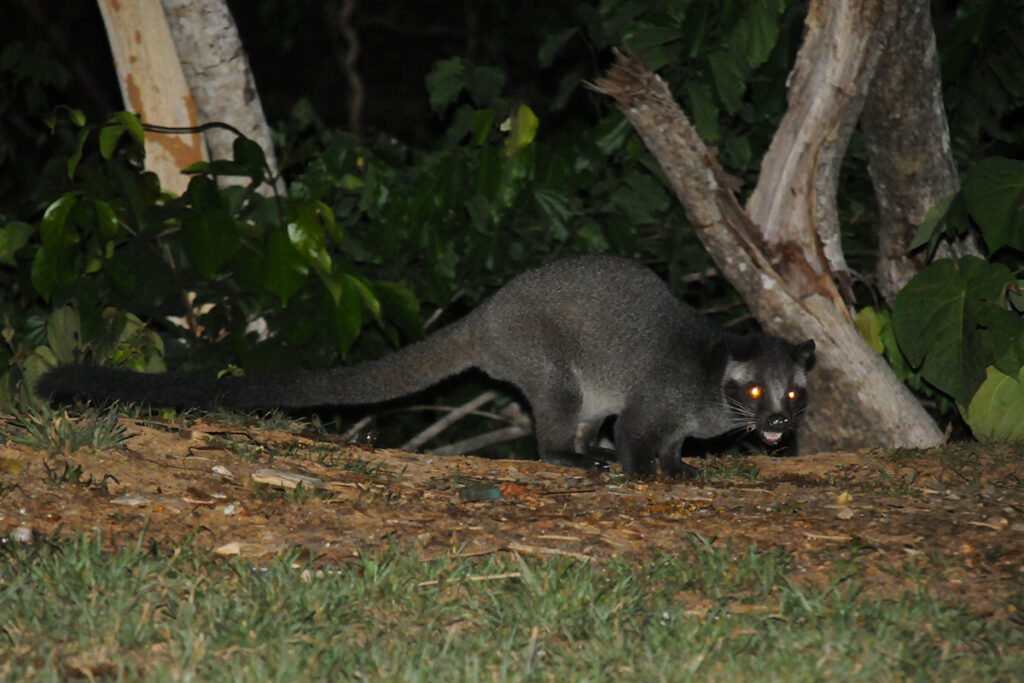
Our last morning in the park didn’t turn up any new species with the exception of a Western striped squirrel on the fig tree. However, ‘no new species’ is in no way the same as ‘no species’. Langurs and giant squirrels, hornbills and barbets were all there, making Kaeng Krachan National Park a wildlife watcher’s paradise.
Before we left the park we waited for a while at the watering hole, but it wasn’t hot enough yet, so the area was quiet. For us, it was time for a new adventure – the tropical island of Ko Chang and the underwater world of corals and multicoloured fish.
More on Thailand Wildlife and National Parks
- 7-Day Chiang Mai Itinerary: Temples, Waterfalls, and Hot Springs
- Amazing Wild Animals in Thailand And Where to See Them
- 12 National Parks in Thailand to Fall in Love With
- Easy Guide to Khao Sok National Park: How to Visit & What to See
- Guide to visiting Khao Yai National Park, Thailand
- Thi Lo Su Waterfall Jungle Adventure – Thailand off the Beaten Path
- Why You Must Visit Erawan National Park on your Trip to Thailand
- Spotting wildlife in Kaeng Krachan National Park
- Guide to Khao Sam Roi Yot National Park, Thailand
- Spotting Wildlife in Mu Ko Chang National Park, Thailand

